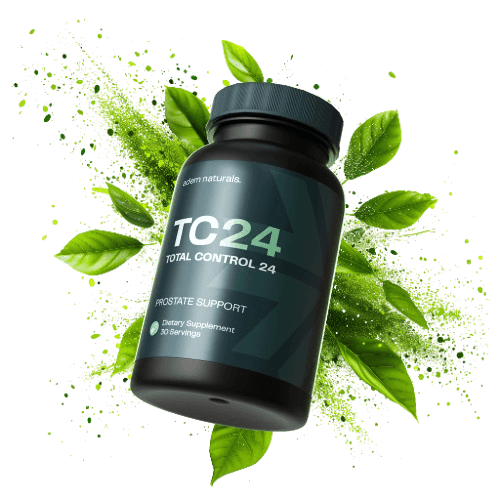
Table of Contents
Introduction
Maybe you’ve heard of auditory dyslexia, or perhaps you have seen a child whose verbal instructions they simply cannot follow although their hearing is never in question? Truly imagine not having a clear understanding, and having to ask someone repeatedly: “What did you say? in sounds or struggling to differentiate between similar-sounding words like “bat” and “mat.” That’s the daily reality for millions of people with auditory dyslexia — a brain-based difference in how we process spoken language.
Whereas traditional dyslexia affects visual reading, auditory dyslexia (commonly known as auditory processing disorder/APD) creates obstacles to understanding verbally presented information. No, it isn’t some kind of hearing impairment; rather, it’s instead the way neural pathways assigned to different brain regions process auditory signals. It affects about 5% of school-aged children, and this often-misunderstood condition has a marked impact on learning, reading fluency and spelling acquisition. The way these people experience cognitive dissonance is similar to the way treatment options can feel overwhelming to navigate when you are sick. Want to decode this condition and learn pro tips for success?
Decoding Auditory Dyslexia: Understanding the Basics
What is Auditory Dyslexia?
Auditory dyslexia, or auditory processing disorder (APD) is considered a type of dyslexia that relates to difficulty in processing and interpreting spoken language. However, people with auditory dyslexia can hear sounds like everyone else, but their brains process the sounds in different ways than most situations.
Notice the Difference in Sound Processing
- Hearing vs Processing — While hearing is related to the physical detection of sound waves by the ears, processing is the underlying concept of how the brain translates these sounds into meaningful information
- Neuroanatomical Routes: The main neural pathways activated in auditory dyslexia are associated with translating sound waves to language.
- Normal Hearing: People with APD usually pass routine hearing tests
Auditory Dyslexia vs Typical Dyslexia
Auditory Dyslexia Challenges
- Trouble hearing and telling similar speech sounds apart
- Difficulty with oral instructions, particularly multi-step directions
- Having difficulty processing rapid speech or conversationsHearing loss in noisy surroundings
- Difficulty remembering information or sequences you heard
Typical Dyslexia Challenges
- Trouble decoding written words
- Difficulty learning sight words
- Weak fluency and understanding in readingSame spelling mistakes
- Slow reading speed
Differences in How Our Brain Functions
- Auditory dyslexia is mostly phonological awareness flow through auditory channel
- Classic dyslexia can be thought of as primarily affecting visual word recognition and phonological processing
- Both conditions can be present simultaneously, compounding learning difficulties
Is it Auditory Dyslexia? Understanding the Signs and Symptoms
Auditory dyslexia can present a wide spectrum of symptoms from mild to severe, It is important to recognize these signs for early detection and treatment. No one’s experience is the same with APD: its symptoms can range in intensity or even combine.
Common Signs and Symptoms
Problems With Discrimination of Sounds in Speech
Auditory dyslexia means that people have difficulty distinguishing between words that sound similar. For instance, “cat” and “hat,” and “pin” and “bin” may sound the same. This confusion happens not due to inability to hear the sounds, but brain processi ng of these sounds as something else.
Auditory Memory Impairment
Even we forget verbally conveyed information very fast and remember them incompletely. This might manifest as:
- The outlined effects outlined is losing parts of a verbal message
- Trouble memorizing phone numbers given verbally
- Having difficulty remembering verbal directions provided only a few minutes previously
- Requiring information to be repeated several times
Sounds Good: Misunderstanding Spoken Language
It is common for words and phrases to be misunderstood and misheard. Someone might hear “lightbulb” as “white bud” or “birthday present” as “birthday peasant.” These misinterpretations can cause breakdowns or lack of confidence in communication in every day contacts.
Inability to Focus and Pay Attention
It can be especially hard to keep track when background noise is playing in the background. A person with APD might:
- Seem lost in thought during conversations
- Difficulty in following conversations in restaurants or near noise
- Struggle to hear a teacher in a sea of classroom noise
- Feel overwhelmed in noisy places such as shopping centres
Trouble With Complex Instructions
Challenges with multi-step verbal directions. Incompletely or incorrectly followed are instructions such as “Please put away your backpack, take out your science book and turn to page forty-three.”
Speech Production Issues
Speech is able to be defined as:
- Words that sound alike or are easily mispronounced
- Hesitations and false starts in speech
- Strange prosody (rhythm and intonation patterns)
- Getting stuck on words in conversation
Learn about sound processing inconsistencies
Individuals may demonstrate:
- Omissions of sounds or syllables when speaking
- Sound additions not presented in the original word
- Substitutions of incorrect sounds (like “aminal” instead of “animal”)
- Rearranging sounds within words
Problems with Rhyming and Phonological Awareness
Making or identifying rhymes can be extraordinarily challenging. This impacts:
- An understanding and appreciation of nursery rhymes and poetry
- Capable of playing word games
- Track development of early reading skills
- Systems designed around phonics-based learning
Dyslexia Symptoms Compared to APD Symptoms
| Auditory Processing Disorder (APD) | Traditional Dyslexia |
| Difficulty understanding speech in noisy environments | Difficulty with reading despite normal intelligence |
| Problems following verbal directions | Problems with spelling and written expression |
| Frequently asking for repetition | Slow reading speed |
| Delayed responses to verbal cues | Letter and word reversals when reading/writing |
| Inconsistent responses to auditory information | Consistent difficulty with decoding text |
| Difficulty distinguishing similar sounds | Difficulty recognizing sight words |
| Poor listening skills | Poor reading comprehension |
| Challenges with phonemic awareness | Challenges with rapid naming tasks |
The Emotional & Social Effects
It affects us emotionally in a significant way because the daily effort of processing auditory information takes its toll. Auditory dyslexia Many people who have auditory dyslexia also have
- How to avoid frustration and anxiety in social and academic settings
- Crisis of confidence due to repeated failures to communicate
- Social withdrawal, owing to trouble keeping up with conversations
- Misunderstandings from people who confuse processing challenges with carelessness or stupidity
- Frustration or emotional exhaustion from the ongoing effort it takes to process auditory information
- School refusal due to academic difficulties
Children with APD may seem shy or withdrawn in classrooms, disengaging out of fear of misinterpreting directions or questions. Adults might learn compensatory strategies but struggle with high-sound environments or crucial verbal interactions, such as job interviews.
Auditory dyslexia’s invisibility can further complicate these issues, as other people may not realize why people who seem to hear normally could be so profoundly challenged by verbal communication.
Effective Strategies and Interventions for Auditory Dyslexia: Empowering Solutions
Auditory dyslexia, also called auditory processing disorder (APD), involves difficulty with what we hear. Interventions that have documented efficacy can result in substantial language and reading success.
Some of the critical strategies and interventions include:
- Auditory Discrimination Training: This training especially targets the recognition of similar sounds and words, enabling a child to identify and discriminate between different sound patterns in words. Includes sound identification, recognition and isolation exercises and minimal pairs training.
- Tailored Approach: Encouraging or prompting the child to describe what actions they are going to take also can help improve their ability to follow directions and recall them later.
- Multisensory Methods: Multiple senses (visual, tactile, auditory) can help reinforce learning and comprehension. One example is using textured letters when learning to read.
- Assistive technology (AT): the use of devices such as text-to-speech devices, speech recognition software, and personal FM systems may aid reading and attention techniques. There are also remote microphone systems, such as Roger Focus, that enhance clarity and deliver the voice of the teacher directly to the child.
- Visual Supports: Picture/schedules/graphic organizers can support processing of verbally presented information.
- Speech-Language Therapy: A speech-language pathologist can help with speech and language difficulties, paying attention to areas such as sounds production, vocabulary skills, and phonological processing.
- Structured Literacy: Orton-Gillingham reading programs (which focus on the relationships between letters and sounds in an explicit, systematic way)
- Davis Dyslexia Correction Method: This program uses orientation procedures blended with symbols to help overcome auditory processing problems.
- Guiding Principles to Follow: Find or create a quiet area to study; Noise reduction can also help eliminate distractions.
- Audio feedback devices: These are specialized devices (e.g. Forbrain) that use auditory feedback to help improve auditory processing and language skills.
So an early diagnosis and proper intervention can go a long way to help someone lead a successful life with auditory dyslexia. The child’s needs are coordinated with specialists, teachers, and parents.

How You Can Help: Practical Suggestions for Families and Schools
Writing for attention deficit disorder children, auditory dyslexia, or simply auditory processing disorder (APD) is going to be supportive also. This means providing measures at home and school to help them cope with difficulties and thrive both academically and socially.
At home:
- Minimize background noise: Set aside a designated study area, away from distractions like television or noisy appliances. In noisy environments, noise-canceling headphones or earplugs can help minimize distractions.
- Multisensory Strategies: Integrate tactile, kinesthetic, and multimodal materials to increase comprehension and retention. For example, letters that are textured to help with tracing and reading.
- Communicate Clearly: Provide the directions succinctly — breaking tasks into smaller chunks. Making it in bold or marking it in a different color can help too.
At school:
- Assistive Technology: Support reading and attention skills with text-to-speech devices and speech recognition software or personal FM systems. Personal remote microphone systems, such as Roger Focus systems, can enhance clarity by sending the teacher’s voice straight to the child’s ear.
- Visual Supports: Present graphic organizers that match topically or other visual assets that correspond with verbally expressed content.
- Collaboration: Facilitate communication among educators, specialists, and parents to help best serve the child’s needs. Create Individualized Education Programs (IEPs) or 504 Plans to specify tailored assistance and approaches.
Additional tips:
- Speech-Language: For addressing speech and language impairments.
- Oritn-Gillingham Reading Program: Take this method to reinforce letter-sound associations in an organized manner.
- Be Positive: Motivate and give time to comfort and encourage.
These strategies will help children with auditory dyslexia to thrive in education.
Teamwork Matters: Collaborating with Professionals for Optimal Support
Providing effective support for individuals suffering from auditory dyslexia requires collaboration among different professionals, parents, and caregivers. The involvement of multiple disciplines is critical to designing effective, holistic and individualized interventions for the child.
Specialist roles who might be involved:
- Audiologists: These specialists can conduct evaluations that assess the efficacy of the central auditory nervous system to diagnose auditory dyslexia or auditory processing disorder (APD).
- Speech-Language Pathologists: With a focus on articulation, vocabulary development, and comprehension skills, SLPs can also help students overcome any speech and language challenges. They also focus on phonology processing and auditory training.
- Educational Psychologists: These professionals play a significant role in screening and evaluating children, and can make referrals for further testing.
- Teachers (Regular and Special Education): They carry out strategies and accommodations in the classroom and work with other professionals to support learning for the student.
- Reading Specialists: They offer specialized help with reading, frequently employing tools such as Orton-Gillingham.
- Pediatrians: they are often involved in the initial identification and referral process.
Here are a few ways to collaborate:
- Frequent communication: Caregivers, educators and specialists should have open lines of communication so that everyone is on the same page and working toward common objectives.
- Cocreative planning: Create Individualized Education Programs (IEPs) or 504 Plans that identify specific accommodations and strategies that can help meet the needs of the student.
- Implementation consistency: Make sure that strategies and accommodations are implemented consistently in both home and school environments.
- Ensure ongoing assessment: Monitor the students progress on a regular basis, and fine-tune the interventions as necessary
So, working collaboratively, professionals and caregivers can ensure an effective learning environment for children with auditory dyslexia.
The Importance of Emotional Intelligence and Well-Being in Education
Just as academic support is vital, so is addressing the emotional well-being of those with auditory dyslexia. Unfortunately, the struggles they experience when processing language can translate into frustration, anxiety, and lowered self-esteem. An environment that supports and encourages resilience matters too.
Top strategies to cultivate emotional health:
- Build Self-Esteem: Take note of strengths and successes other than academics. Evidence of a natural aptitude for activities that have nothing to do with language.
- Help Someone Develop Self-Advocacy Skills: Empower people to learn about their struggles and demand what they need. Help them learn to explain their auditory processing differences to their teachers, employers, and peers.
- Create a Supportive Environment: Limit background noise and distractions to prevent sensory overload. Create a space for you to study and relax.
- Promote Open Communication: Provide a platform where people can share their thoughts and anger. Be compassionate and validate their feelings.
- Teach Coping Strategies Coping: Skills Developed For Managing Stress And Anxiety Associated With Auditory Processing Difficulties. This should involve mindfulness exercises, deep breathing, or other techniques for relaxation.
- Tackle Secondary Issues: Be aware of and treat any accompanying diagnoses such as anxiety, ADHD, or poor executive functioning. Get professional help for these types of things as necessary!
- Encourage Growth Mindset: The idea that skills and intelligence can be improved through effort and perseverance. Surround them with the idea of learning from mistakes and treating challenges as opportunities for growth.
- Encouragement: Be positive and patient to help gain confidence.
Frequently Asked Questions (FAQ) about Auditory Dyslexia
What is auditory dyslexia?
Auditory dyslexia: A Specific Type of Dyslexia Auditory dyslexia, formally known as auditory processing disorder (APD), is a specific type of dyslexia that hinders a person’s ability to process and comprehend spoken words. Phonological processing/phoneme awareness disorder challenges an individual by struggling with these phonological awareness skills (crucial for reading and writing).
Are auditory dyslexia and auditory processing disorder (APD) the same?
Some teachers use the terms auditory dyslexia, and Auditory Processing Disorder (APD) interchangeably. APD is an impairment in the processing of sound within the central auditory nervous system. Auditory dyslexia is considered a subtype of dyslexia by some and a synonym for APD by others.
How prevalent is auditory dyslexia?
A substantial percentage of children with learning difficulties have auditory processing disorder (APD) according to research. From the National Institutes of Health, about 43% of children who are referred for learning disabilities have APD. Not to mention that 70% of people with dyslexia may also have an underlying auditory processing disorder. Of those tested for learning disabilities, 25% were diagnosed with both APD and dyslexia.
Are auditory and visual dyslexia the same thing?
No, auditory dyslexia and visual dyslexia are different kinds of dyslexia. Visual dyslexia, otherwise known as visual dyslexic phenomenon, is a specific type of dyslexia that affects reading and spelling, as it refers with having challenges in recognizing written words. Contrarily, auditory dyslexia concentrates on challenges in processing and comprehending verbal language.
Does auditory dyslexia affect hearing?
No, auditory dyslexia is not hearing loss. Most with auditory dyslexia can hear any sound perfectly normal. Brings a metric that has less to do with the ability to hear and more to do with how the brain processes auditory information.
Is there a cure for auditory dyslexia?
Different from Auditory Dyslexia itself, as those are portrayed as dependencies or conditions, there is no “cure” for auditory dyslexia, but it can be improved with proper interventions. Effective interventions may comprise training in phonological awareness, exercises for auditory discrimination, multisensory reading programs, and individual support. Early diagnosis and interventions at the right time would greatly improve language and reading skills.
Who can diagnose auditory dyslexia?
Specialists in the hearing mechanism such as audiologists diagnose auditory dyslexia, or auditory processing disorder. Other professionals – including educational psychologists, speech-language pathologists and educators – may be involved with screening and evaluating the child before they are referred for testing.
What are signs of auditory dyslexia?
Typical signs include inability to discriminate the sounds of speech, difficulty with auditory memory, misunderstanding what others say, jumbling multisyllabic words, and trouble following complicated verbal directions.
How can I best help my child with auditory dyslexia?
For their part, parents and caregivers can establish a supportive, structured home environment; advocate for their child’s needs in school; collaborate with professionals specializing in dyslexia; and provide patience and encouragement. You can also have a language-rich home and utilize assistive technologies.

Unlock the Potential of Your Mind with Pineal Guardian! This brain health supplement, in the form of convenient drops, is designed to enhance your daily health routine. Packed with premium ingredients that improve brain function, each drop supports focus, mental clarity, and cognitive function. Click on the image to find out more.
Conclusion
Such a unique form of dyslexia exists as auditory dyslexia affecting the recognition of speech sounds which in turn affect the phonetic awareness and overall understanding of the language. First thing to note, auditory dyslexia is NOT a hearing impairment — it is a neurological difference in the way the brain processes sounds.
With early diagnosis and targeted interventions, management can go a long way in improving language and reading skills. Interventions must be comprehensive and enough to specifically target auditory processing deficits through auditory discrimination training, multisensory strategies, or assistive technologies. To promote a collaborative school response, audiologists, speech-language pathologists, educators, and parents all have to work closely to create a supportive and efficient classroom setting.
In addition, the mental health and resilience of auditory dyslexia individuals MUST also be encouraged. They may need developing their self-esteem, helping with self-advocating, and effective coping strategies so they can navigate those challenges and succeed academically and socially.
Auditory dyslexia is generally permanent, but with proper coping mechanisms and assistance, the patient can be an effective member of society. In order to create the right environments and infrastructures where these individuals can succeed, we must first understand their specific needs.






